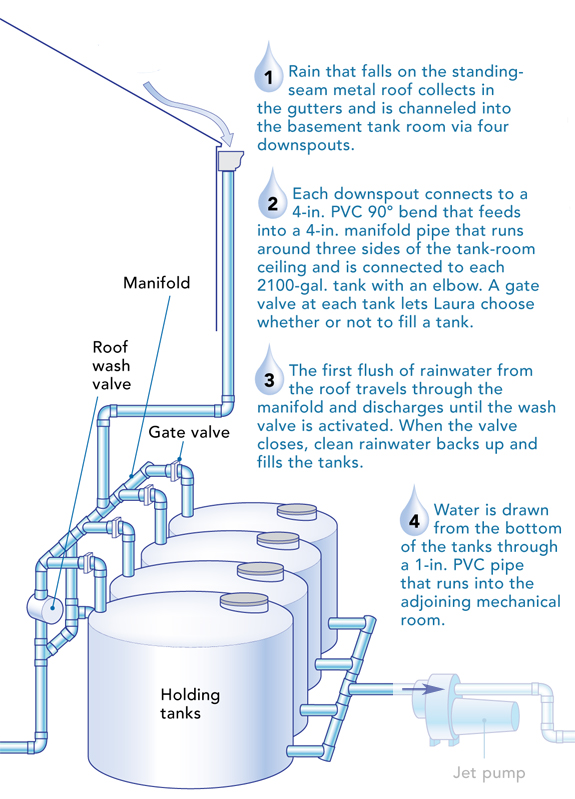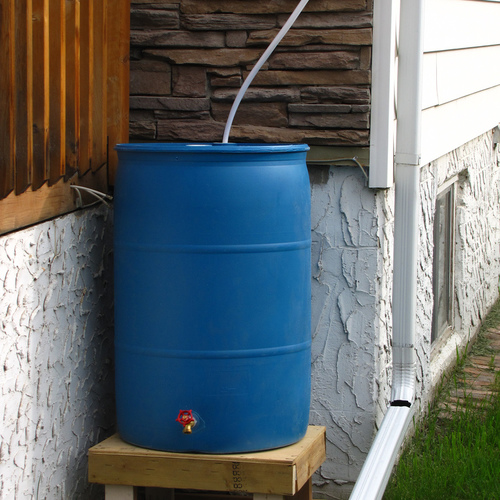Image Credit: Dan Thornton
The coastal community of Small Point shuts down its water supply in winter, which forced Laura Sewall to find an alternative source of water. A well was one option, but the high mineral content in local groundwater would have required treatment. More than that, Laura did not want to interfere with the area’s delicate hydrological balance.
Factoring in supply and demand
In designing the system for Laura’s house, builder Christopher Hahn looked at the average rainfall for coastal Maine (about 4 inches per month) and calculated how much the home’s standing-seam metal roof could reliably collect. He used a formula that assumed a half-gallon of water would be collected for each inch of rainfall on each square foot of the home’s footprint. With a roof area of about 2200 square feet, the system would collect 4400 gallons in an average month. The four tanks hold almost twice that amount. With Laura’s water conserving fixtures and appliances, the system exceeds her needs during the months when there’s no other source of water.
— This blog is an excerpt of the Fine Homebuilding article Ebb and Flow, by architect Stephen Sullivan. Find the full article at FineHomebuilding.com.
Weekly Newsletter
Get building science and energy efficiency advice, plus special offers, in your inbox.














One Comment
Great idea, should be extended to North American wide
This idea is great and one that more people should be encouraged to use; it would not only reduce the stress load on municipal water systems; but at the same time would reduce aquifer depletion. It would also teach us in North America (I speak as a Canadian and North American as well) the value of water and stop needless wasting of it via toilets and leaving the water on constantly when brushing teeth, taking longer then needed showers, etc. It should be make mandatory for new builds to have water catchment as part of each house built and grey-water systems to use non-potable water for those things that don't need it (toilet flushes, clothes washing, et al.).
Log in or create an account to post a comment.
Sign up Log in